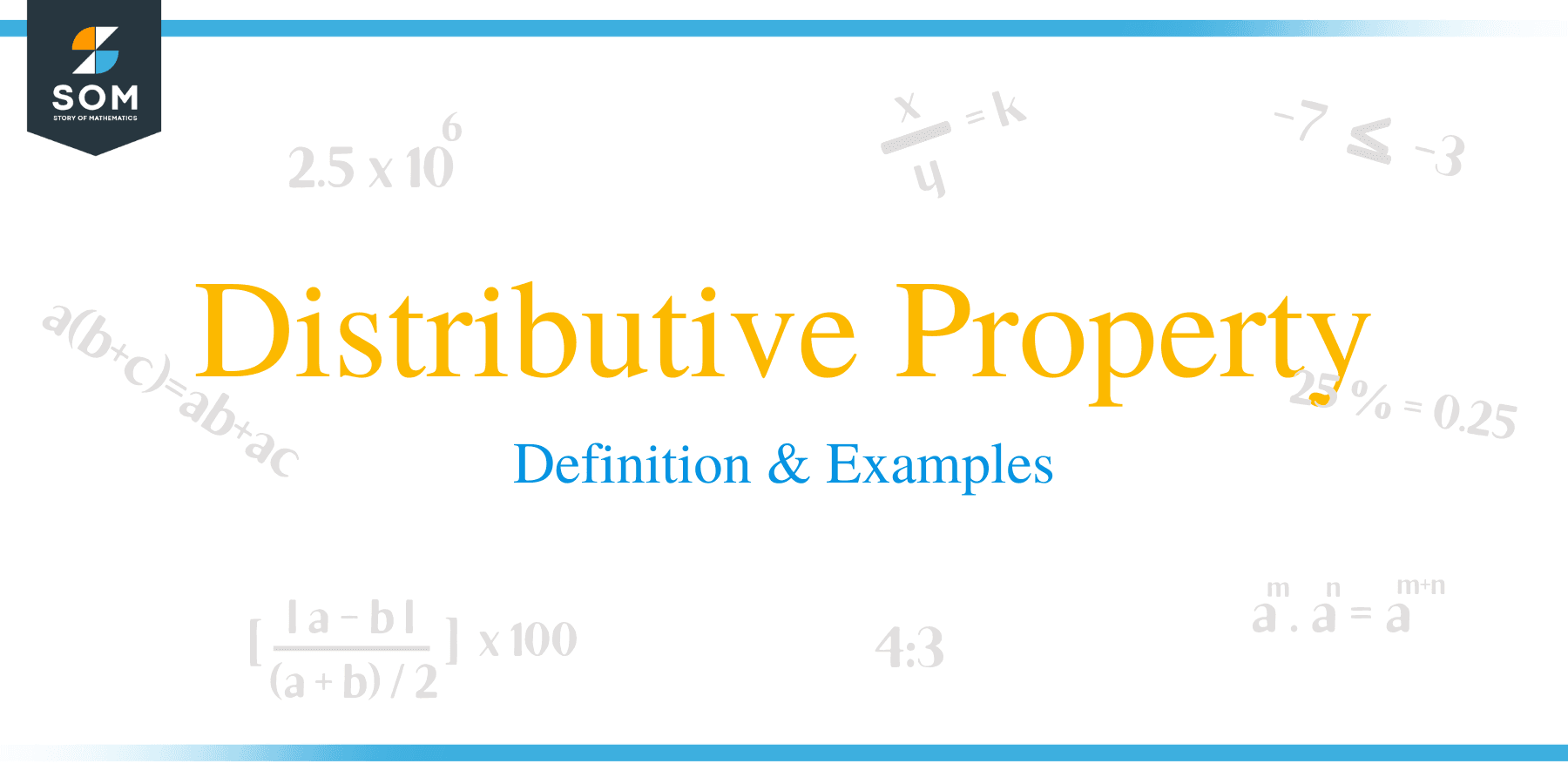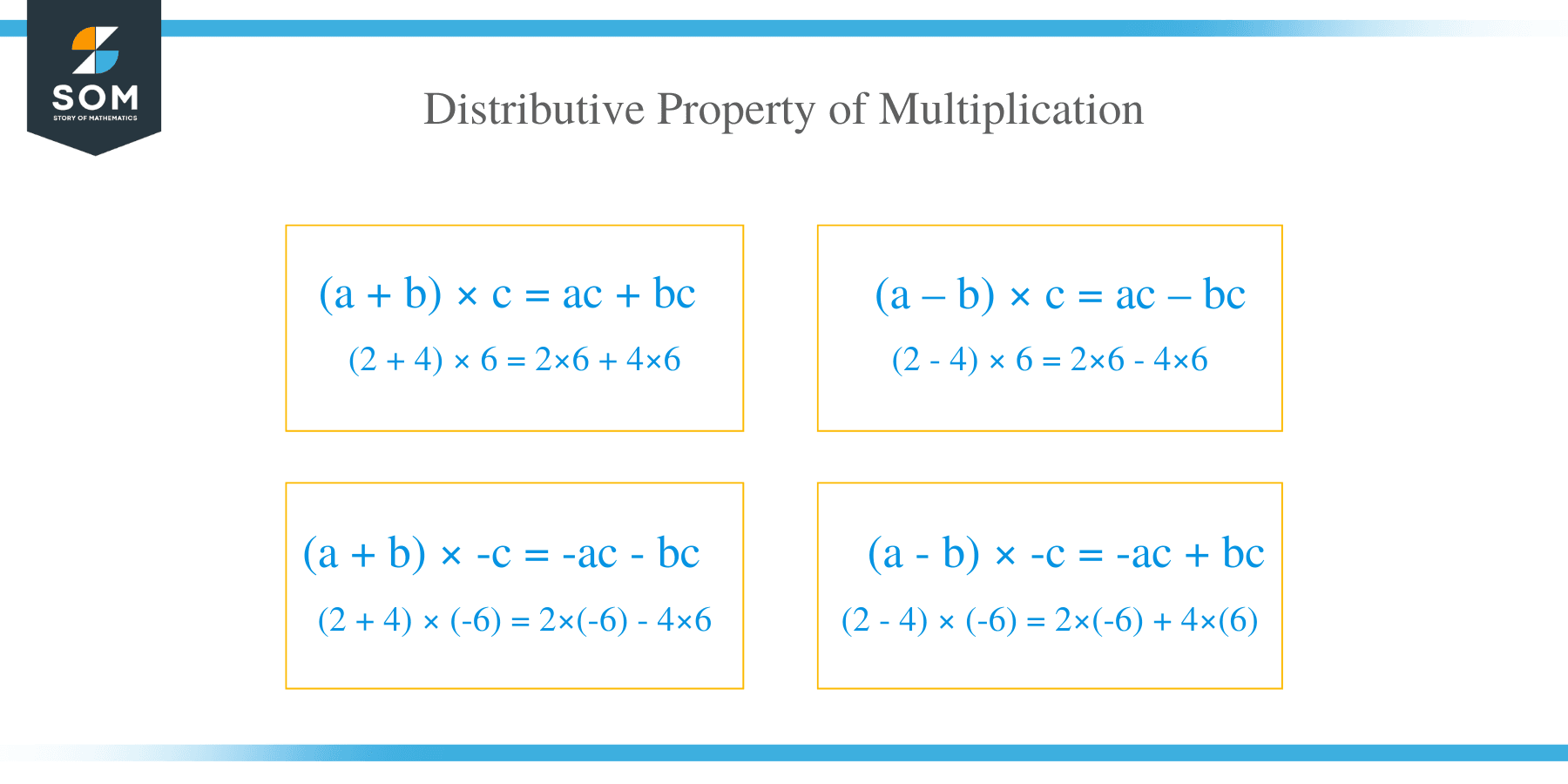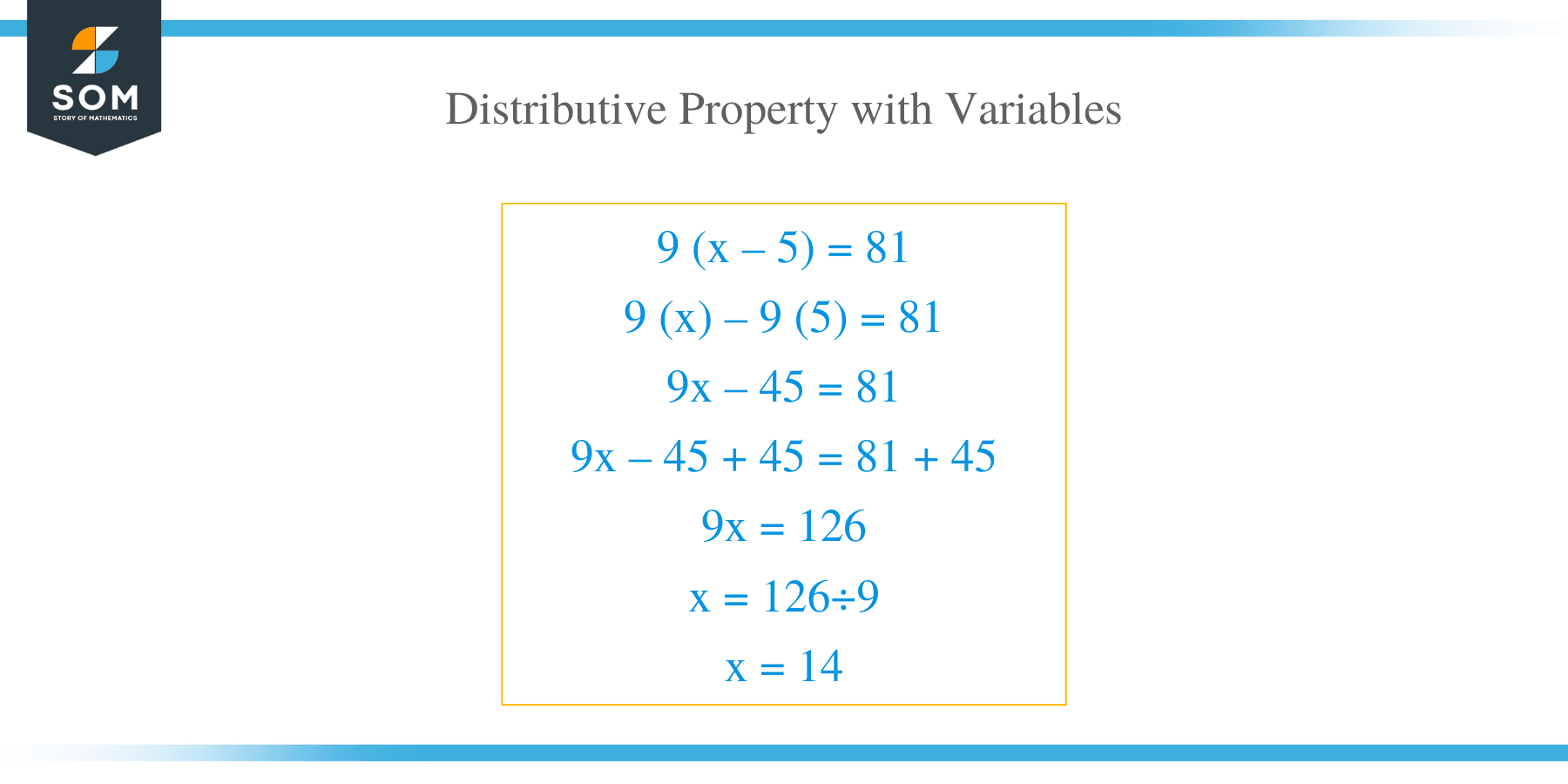- Home
- >
- Distributive Property – Definition & Examples
JUMP TO TOPIC
Distributive Property – Definition & Examples
 Among all properties in mathematics, the distributive property is used quite often. This is because any method of multiplying numbers by another number uses distributive property. This property was introduced in the early 18th century when mathematicians started analyzing numbers’ abstracts and properties.
Among all properties in mathematics, the distributive property is used quite often. This is because any method of multiplying numbers by another number uses distributive property. This property was introduced in the early 18th century when mathematicians started analyzing numbers’ abstracts and properties.
The word distributive is taken from the word “distribute,” which means you are dividing something into parts. This property distributes or breaks down expressions into the addition or subtraction of two numbers.
What is Distributive Property?
The distributive property is a property of multiplication used in addition and subtraction. This property states that two or more terms in addition or subtraction with a number are equal to the addition or subtraction of the product of each of the terms with that number.
Distributive Property of Multiplication
According to the distribution property of multiplication, the product of a number by addition is equal to the sum of that number’s products by each of the addends. The distribution property of multiplication is also true for subtraction, where you can either first subtract the numbers and multiply them or multiply the numbers first and then subtract.
Consider three numbers a, b and c, the sum of a and b multiplied by c is equal to the sum of each addition multiplied by c, i.e.
(a + b) × c = ac + bc
Similarly, you can write the distribution property of multiplication for subtraction,
(a – b) × c = ac – bc
Distributive Property with Variables
As stated earlier, the distributive property is used quite frequently in mathematics. Therefore, it is really helpful in simplifying algebraic equations as well.
To find the unknown value in the equation, we can follow the steps below:
- Find the product of a number with the other numbers inside the parentheses.
- Arrange the terms so that constant term(s) and variable term(s) are on the opposite side of the equation.
- Solve the equation.
An example is given in the final section.
Distributive Property with Exponents
The distributive property is also useful in equations with exponents. An exponent means the number of times a number is multiplied by itself. If there is an equation instead of a number, the property holds true as well.
You need to follow the steps below to solve an exponent problem using distributive property:
- Expand the given equation.
- Find all the products.
- Add or subtract the like terms.
- Solve or simplify the equation.
An example is given in the final section.
Distributive Property with Fractions
Applying distributive property to equations with fractions is slightly more difficult than applying this property to any other form of equation.
Use the following steps to solve equations with fractions using distributive property:
- Identify the fractions.
- Convert the fraction into integers using the distributive property. For that, multiply both sides of the equations by the LCM.
- Find the products.
- Isolate the terms with variables and the terms with constants.
- Solve or simplify the equation.
An example is given in the final section.
Examples
To solve the distributive word problems, you always need to figure out a numerical expression instead of finding answers. We will go through some basic problems before doing the word problems.
Example 1
Solve the following equation using the distributive property.
9 (x – 5) = 81
Solution
- Step 1: Find the product of a number with the other numbers inside the parenthesis.
9 (x) – 9 (5) = 81
9x – 45 = 81
- Step 2: Arrange the terms in a way that constant term(s) and variable term(s) are on the opposite of the equation.
9x – 45 + 45 = 81 + 45
9x = 126
- Step 3: Solve the equation.
9x = 126
x = 126/9
x = 14
Example 2
Solve the following equation using the distributive property.
(7x + 4)2
Solution
- Step 1: Expand the equation.
(7x + 4)2 = (7x + 4) (7x + 4)
- Step 2: Find all the products.
(7x + 4) (7x + 4) = 49x2 + 28x + 28x + 16
- Step 3: Add the like terms.
49x2 + 56x + 16
Example 3
Solve the following equation using the distributive property.
x – 5 = x/5 + 1/10
Solution
- Step 1: Identify the fractions.
There are two fractions on the right-hand side.
- Step 2: Find the LCM of 5, 10, which is 10.
Multiply with LCM on both sides.
10 (x – 5) = 10 (x/5 + 1/10)
- Step 3: Simplify,
10x – 50 = 2x + 1
- Step 4: Isolate terms with variables and terms with constants.
10x – 2x = 1 + 50
- Step 5:
8x = 51
x = 51/8
Example 4
You have two friends, Mike and Sam, born on the same day. You need to gift them the same set of shirts and trousers on their birthday. If the shirt is worth $12 and the trousers are worth $20, what is the total expense of buying the gifts?
Solution
There are two ways to solve this.
Method 1:
- Step 1: Find the total cost of each set.
$12 + $20 = $32
- Step 2: As there are two friends, multiply by 2 for the total cost.
$32 × 2
- Step 3: Find the total cost.
$32 × 2 = $64
Method 2:
- Step 1: As there are 2 friends, double the cost of the shirt.
$12 × 2 = $24
- Step 2: As there are 2 friends, double the cost of trousers.
$20 × 2 = $40
- Step 3: Find the total cost.
$24 + $40 = $64
Example 5
Three friends have two dimes, three nickels, and ten pennies each. How much money do they have in total?
Solution
Again, there are two ways to solve this.
Method 1:
- Step 1: Find the total cost of each type of coin.
Dimes:
2 × 10¢ = 20¢
Nickels:
3 × 5¢ = 15¢
Pennies:
10 × 1¢ = 10¢
- Step 2: There are three friends, so multiply each type of coin by 3.
Dimes:
3 × 20¢ = 60¢
Nickels:
3 × 15¢ = 45¢
Pennies:
3 × 10¢ = 30¢
- Step 3: Find the total amount of money.
60¢ + 45¢ + 30¢ = 135¢
Step 4: Convert to dollars.
135/100 = $1.35
Method 2:
- Step 1: Each person has two dimes, three nickels, and ten pennies.
2 × 10¢ + 3 × 5¢ + 1 × 10¢
- Step 2: Total money each person has.
2 × 10¢ + 3 × 5¢ + 1 × 10¢ = 45¢
- Step 3: Total money three people have.
45¢ + 45¢ + 45¢ = 135¢
- Step 4: Convert to dollars.
135/100 = $1.35
Example 6
The length of a rectangle is 3 more than the width of the rectangle. If the rectangle area is 18 square units, find the length and width of the rectangle.
Solution
- Step 1: Define the length and width of a rectangle.
Length is represented by x.
Therefore, width = x + 3
- Step 2: The area of rectangle is 18 square units.
Area = length × width
x(x + 3) = 18
- Step 3: Use the distributive property.
x2 + 3x = 18
- Step 4: Rewrite as quadratic equation.
x2 + 3x – 18 = 0
- Step 5: Factorize and solve.
x2 + 6x – 3x – 18 = 0
x(x + 6) – 3(x + 6) = 0
(x – 3)(x + 6) = 0
x = 3, −6
- Step 6: State the answer.
Length cannot be negative. Therefore, length = x = 3, and width = x + 3 = 6
